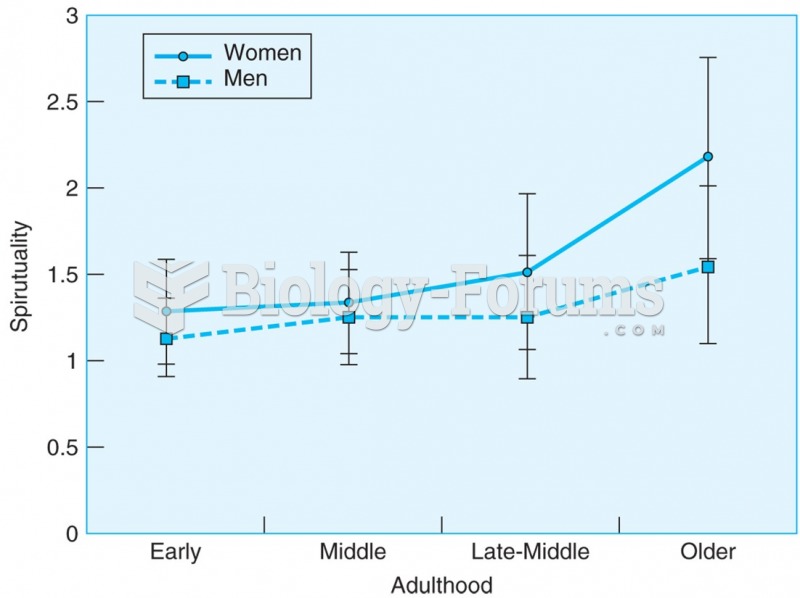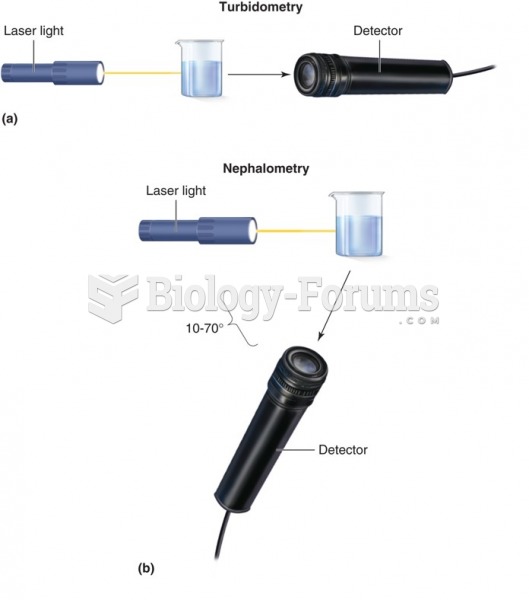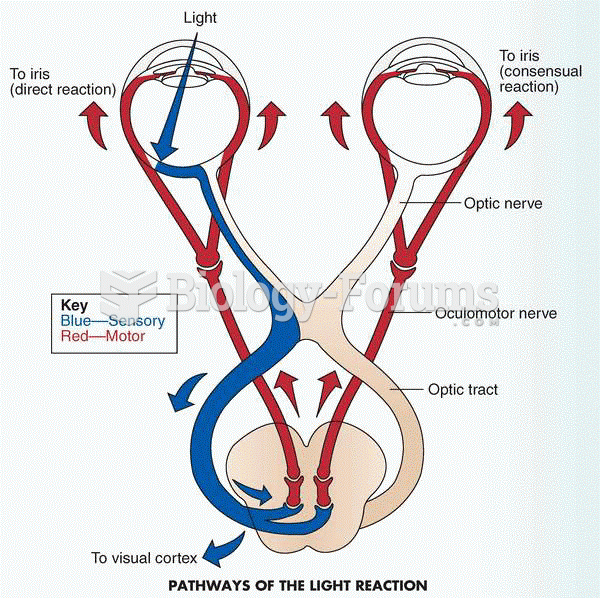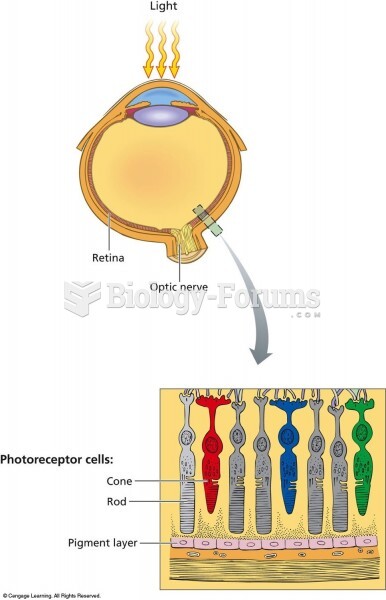|
|
|
Did you know?
Patients who have been on total parenteral nutrition for more than a few days may need to have foods gradually reintroduced to give the digestive tract time to start working again.
Did you know?
It is difficult to obtain enough calcium without consuming milk or other dairy foods.
Did you know?
The FDA recognizes 118 routes of administration.
Did you know?
You should not take more than 1,000 mg of vitamin E per day. Doses above this amount increase the risk of bleeding problems that can lead to a stroke.
Did you know?
Vital signs (blood pressure, temperature, pulse rate, respiration rate) should be taken before any drug administration. Patients should be informed not to use tobacco or caffeine at least 30 minutes before their appointment.
 Spirituality increases with age, but there are different patterns for the two genders. Both genders ...
Spirituality increases with age, but there are different patterns for the two genders. Both genders ...
 (a) A turbidometry detector measures laser light directly across from the light source. The sample, ...
(a) A turbidometry detector measures laser light directly across from the light source. The sample, ...





